 |
 |
 |
| |
Non-alcoholic fatty liver disease (NAFLD) in HIV-monoinfected
patients:
results from the European ECHAM study
|
| |
| |
22nd International Workshop on Comorbidites and Adverse Drug Reactions in HIV 2020
Reported by Jules Levin
Patrick Ingiliz1, Lambert Assoumou2, Stephane De Wit3, Pierre-Marie Girard4, Marc Antoine Valantin5, Christine Katlama5, Coca Necsoi3, Pauline Campa4, Anja D. Huefner6, Julian Schulze zur Wiesch6, Hayette Rougier4, Jean-Philippe Bastard7, Stefan Mauss8, Lawrence Serfaty9, Vlad Ratziu10, Yves Menu11, Dominique Costagliola2, Georg Behrens12, Maud Lemoine13, Jacqueline Capeau7, 15 on behalf of the ANRS-ECHAM group.
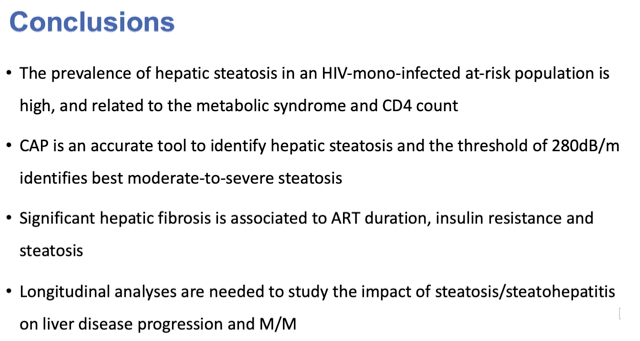
Abstract
Non-alcoholic fatty liver disease (NAFLD) in HIV- monoinfected patients: results from the European ECHAM study
Background: Metabolic liver disease and unexplained transaminase elevations are common features in mono- infected people living with HIV (PLWH) on antiretro- viral treatment (ART). They generally result from the presence of non-alcoholic fatty liver disease (NAFLD), a growing concern in this population. However, the real impact and role of NAFLD in inducing advanced liver disease in PLWH remains unknown.
Methods: We conducted a multicentre European study (ECHAM) in order to determine the prevalence and risk factors of liver steatosis and fibrosis in ART- controlled monoinfected PLWH over 40 years of age with either a metabolic syndrome (MetS) or persistently elevated liver enzymes or clinical lipodystrophy. Participants were prospectively enrolled and had a full liver and metabolic assessment including magnetic reso- nance imaging proton density fat fraction (MRI-PDFF), vibration-controlled transient elastography with also determination of CAP values (VCTE, Fibroscan®) and serological markers. Following our validation study, MRI-PDFF and CAP were used as the best diagnostic methods for the detection of moderate-to-severe liver steatosis and aspartate-aminotransferase (AST) to platelet ratio-index (APRI) of significant fibrosis.
Results: From March 2014 to November 2015, we enrolled 442 participants and analysed 402 of them: male (85%), median age 55 years (IQR 50-61), median BMI 26.0 kg/m2 (23.6-28.7), median CD4 cell count 630/mm3 (510-832), 67% met the definition of MetS. Significant liver steatosis (MRI-PDFF ≥10%), fibrosis (APRI ≥0.5), cirrhosis (APRI ≥2) were observed in 36%, 29% and 2%, respectively.
Multivariable analysis identified seven factors independently associated with steatosis: ALT (OR: 1.23 [1.16-1.31] per additional 5U), CD4 T-cell count (OR: 4.04 [1.92-8.51] per additional log2 U), ferritin (OR: 1.05 [1.03-1.07] per additional 10U), triglycerides (OR: 1.48 [1.18-1.84] per additional U), leptin (≥3.2 μg/l, OR: 2.12 [1.14-3.93]), HDL (<1 mmol/l for men, <1.3 mmol/l for women, OR: 1.83 [1.03-3.27]), non-CC PNPLA3 genetic polymorphism (OR: 1.92 [1.11-3.33]).
Otherwise, three independent factors were associated with significant liver fibrosis: duration of ART exposure (OR: 1.07 [1.02- 1.12] per additional year), insulin resistance (HOMA ≥2.5, 2.04 [1.25-3.35]) and MRI-PDFF ≥10% (OR: 3.21 [1.99-5.18]).
Using MRI-PDFF as a reference, the CAP technique (cut-off 280 dB/m), had good accuracy (0.86 [0.82-0.90]) for the diagnosis of moderate-to-severe steatosis.
Conclusions: MRI-PDFF and CAP (280 dB/m thresh- old) are valuable tools for identification of steatosis in ART-controlled monoinfected PLWH with either a met- abolic syndrome or unexplained liver enzyme elevation or lipodystrophy. Significant liver steatosis is frequent and is associated with classic features of the metabolic syndrome and a high CD4 cell count. Liver fibrosis is common and some patients develop cirrhosis. Indepen- dent risk factors for liver fibrosis are duration of ART exposure and insulin resistance together with hepatic steatosis, indicating that metabolic liver disease and ART participate in liver fibrosis in this at-risk popula- tion which therefore requires screening and monitoring.
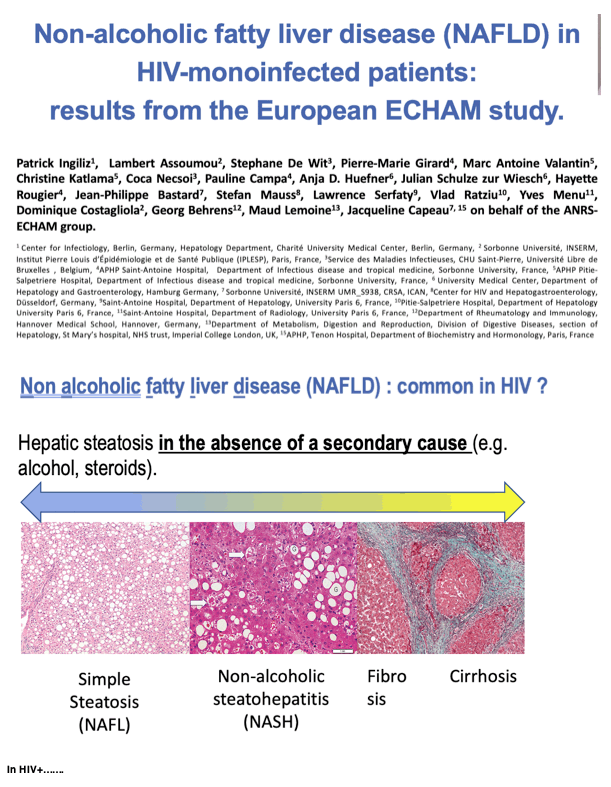
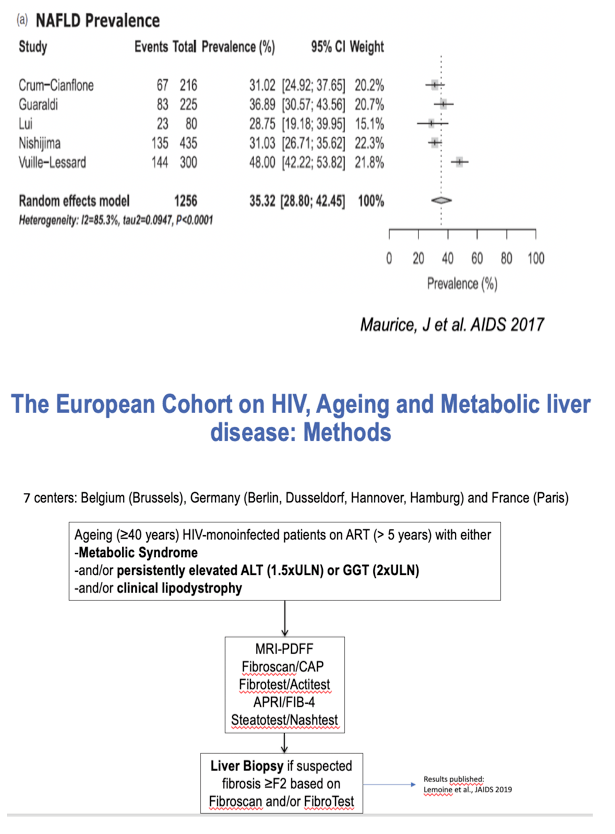
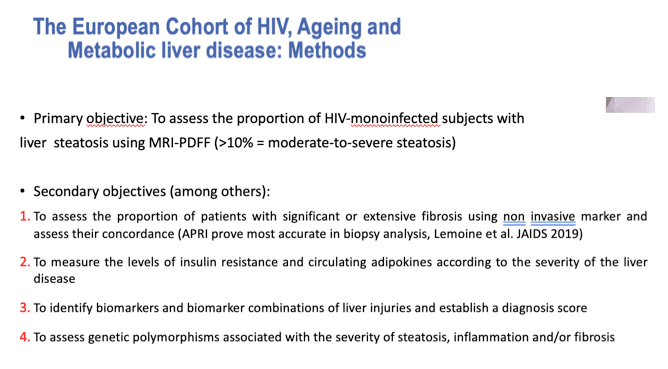
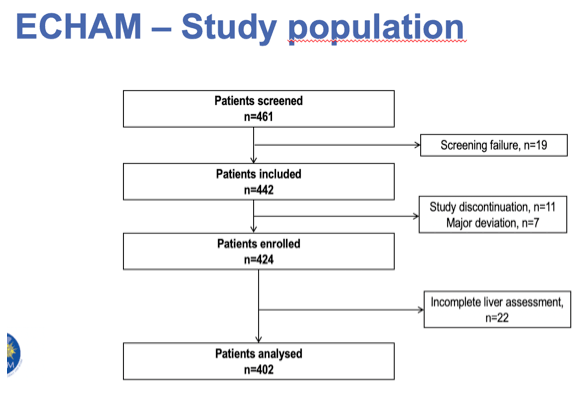
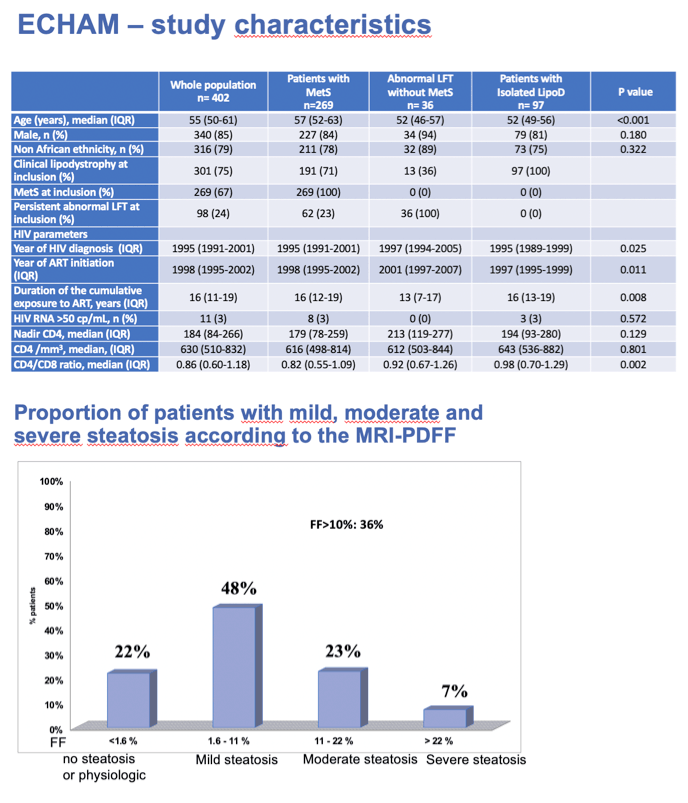
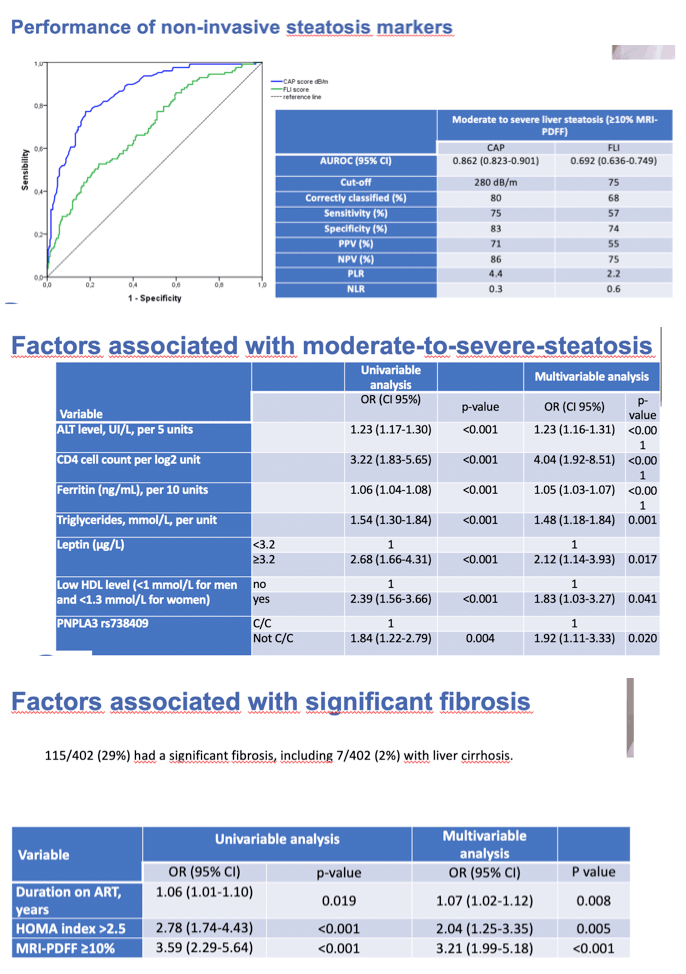
|
| |
|
 |
 |
|
|